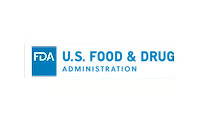FDA Developing Food Safety Plan for Frozen, Fresh Berries

Credit: birgl via Pixabay
The U.S. Food and Drug Administration (FDA) is developing a food safety prevention strategy for fresh and frozen berries. The strategy is being developed in response to a history of hepatitis A (HAV) and norovirus (NoV) outbreaks linked to the consumption of both fresh and frozen berries.
According to FDA, in the U.S., there have been four HAV outbreaks and three NoV outbreaks linked to frozen berries from 1990 to 2016, and since 2011, there have been three HAV outbreaks linked to fresh berries, including a current outbreak linked to fresh organic strawberries. Globally, from 1983 to 2018, there were 50 outbreaks attributed to frozen berries: 36 caused by NoV and 14 by HAV. Freezing preserves berries but generally does not inactivate viruses that may be introduced at various points in the supply chain, such as by infected workers, contaminated water, or contaminated food contact surfaces. In addition, fresh berries are generally eaten raw without a kill step that could eliminate pathogens.
FDA states that the food safety prevention strategy for berries will be informed by the findings of surveillance sampling. In August 2022, FDA plans to resume an assignment to collect and test frozen berries was previously put on hold due to the COVID-19 pandemic. The project will attempt to estimate the prevalence of HAV and NoV in frozen strawberries, raspberries, and blackberries, and help FDA identify sites where practices or conditions may exist that put food safety at risk.
To date, FDA has collected and tested more than 1,100 samples under the assignment and plans to collect and test an additional 427 samples. However, FDA does not plan to collect or test additional frozen strawberry samples as the agency has already met its collection target for the commodity.
FDA plans to work collaboratively with industry, academia, and regulatory partners in the development of the food safety prevention strategy to identify measures that can be taken to limit or prevent contamination throughout the berry supply chain, approaches to re-enforce control measures and their applications, and areas where additional research is required.
Looking for quick answers on food safety topics?
Try Ask FSM, our new smart AI search tool.
Ask FSM →








